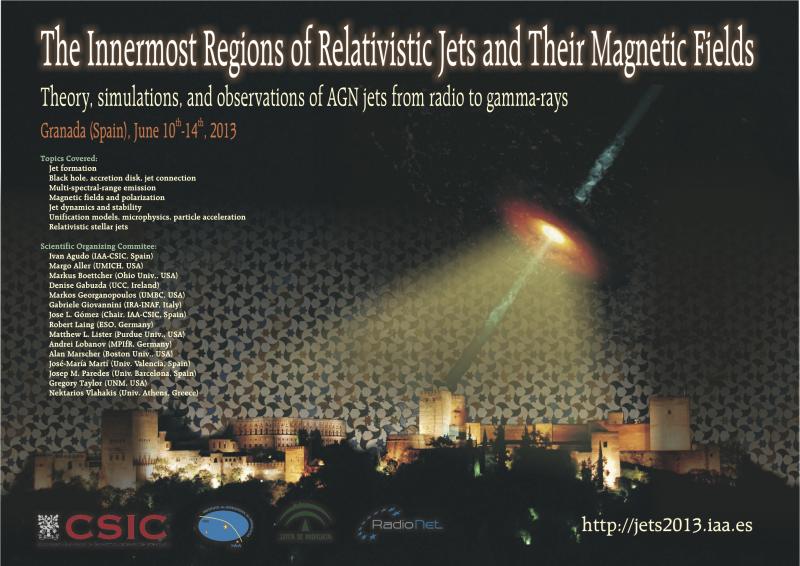The Innermost Regions of Relativistic Jets and Their Magnetic Fields. Granada (Spain). June 10th-14th, 2013.
Behera, Bagmeet
The origin and emission mechanism of VHE (>100 GeV) emission from FSRQs.
Author list: Bagmeet Behera
Flat Spectrum Radio Quasars, unlike BL Lac objects, are blazars that show prominent line-emission and strong thermal components associated with the accretion disk, the broad-line region (BLR), and/or the dusty torus. The low energy peak in the continuum is from synchrotron emission (of electrons), and the high energy peak is well explained by external-Compton emission. In these models the relativistic electrons in the jet up scatter photons from the thermal photon fields up to GeV energies. Beyond a few tens of GeV such models predict cutoffs due to Klein-Nishina effect and internal absorption via pair production. While >300 FSRQs have been seen with Fermi-LAT (between 100 MeV - 30 GeV) only three have been detected at >~100 GeV (Very High Energy) with Cherenkov telescopes. The detection of VHE emission constrains the location of the blazar zone based on internal absorption estimates, but challenges the emission models that predict cutoffs. While a number of GeV flaring states (in various FSRQs) have been observed with Cherenkov telescopes only few have resulted in detection of a VHE signal. The broadband emission characteristics and other observables such as apparent velocities in the jets of bright Fermi FSRQs (including the VHE-detected FSRQs) are studied and put in context to better understand the location and emission mechanism of VHE gamma-ray emitting FSRQS in particular.




